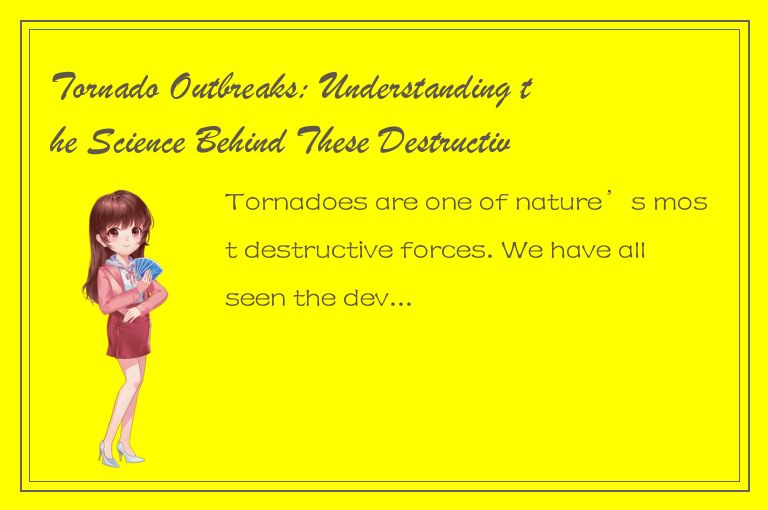Tornadoes are one of nature’s most destructive forces. We have all seen the devastating effects they can have on communities, homes, and lives. Tornado outbreaks are particularly frightening because they can occur suddenly and with little warning. In order to better understand tornado outbreaks, we need to look at the science behind these destructive forces.

A tornado is a rapidly rotating column of air that is in contact with both the surface of the earth and a cumulonimbus cloud, or thunderstorm cloud. Tornadoes can range in size from a few meters to over a kilometer in diameter, and can travel at speeds of over 100 miles per hour.
Tornadoes are most common in the central United States, a region known as Tornado Alley. This is because Tornado Alley has a unique combination of atmospheric conditions that make it particularly prone to tornadoes. These conditions include warm, moist air from the Gulf of Mexico clashing with cooler, dry air from the Rocky Mountains. This clash of air masses creates the instability and turbulent conditions necessary for tornado formation.
Tornado outbreaks occur when a large number of tornadoes form in a short period of time, often in the same general area. These outbreaks can be particularly devastating because they may overwhelm emergency services, leaving communities without the resources to respond effectively.
One of the main factors that contribute to tornado outbreaks is the presence of strong atmospheric “shear.” Shear refers to the change in wind speed and direction with height in the atmosphere. This can create a spinning motion in the air, which can be further amplified by updrafts within the storm.
Another important factor in tornado outbreak is the presence of “convection,” or the vertical movement of air within the storm. Convection occurs when warm, moist air rises from the surface, cools, and condenses into clouds. This process releases heat, which further fuels the storm, creating stronger updrafts.
It is worth noting that while these conditions are necessary for tornado formation, they are not sufficient. Many thunderstorms have strong shear and convection, but never produce tornadoes. The specific conditions within the storm must be just right for a tornado to form.
While we have a basic understanding of the atmospheric conditions necessary for tornado outbreaks, meteorologists are still working to better predict when and where these outbreaks will occur. Doppler radar, which can detect the motion of particles within the air, can be used to detect rotation within a storm, and is a useful tool in tornado prediction. However, it is still not always possible to predict with certainty when and where a tornado will form.
In conclusion, tornado outbreaks are a frightening and destructive force of nature. Through studying the science behind these outbreaks, we can learn more about the specific atmospheric conditions necessary for tornado formation, and work to better predict and prepare for these devastating events.




 QQ客服专员
QQ客服专员 电话客服专员
电话客服专员